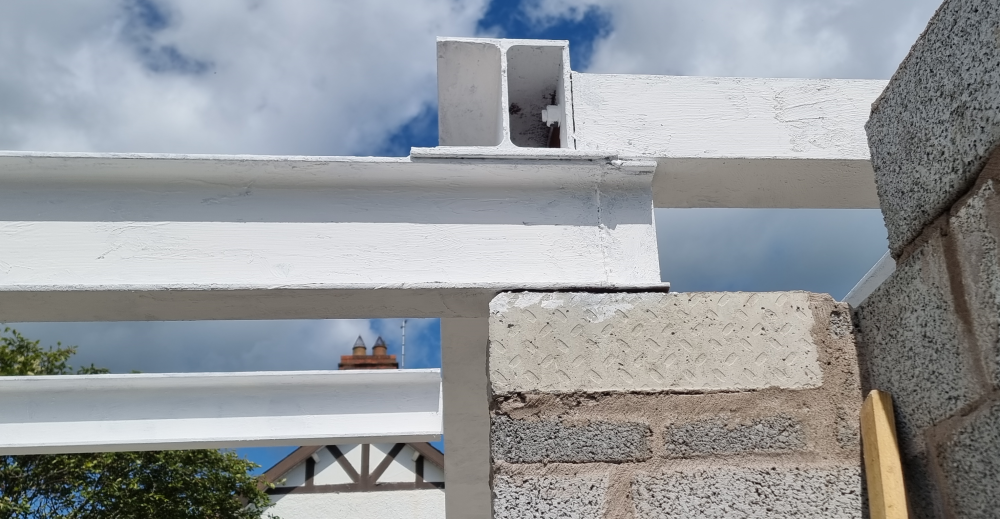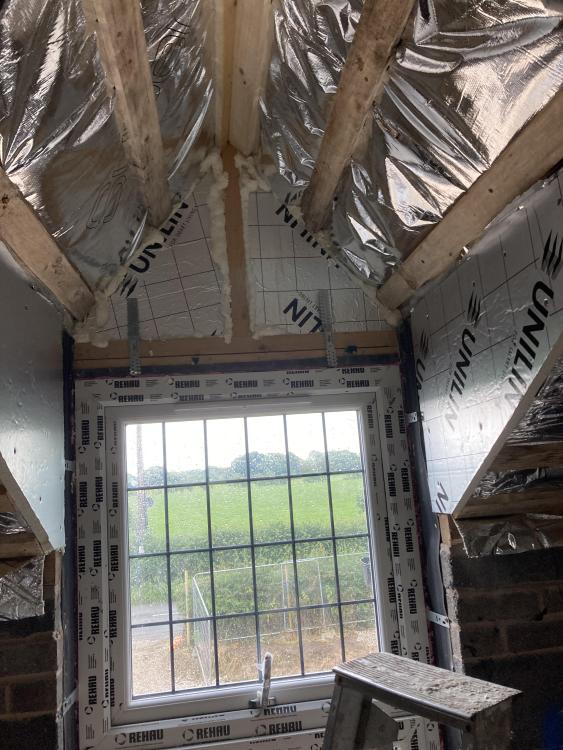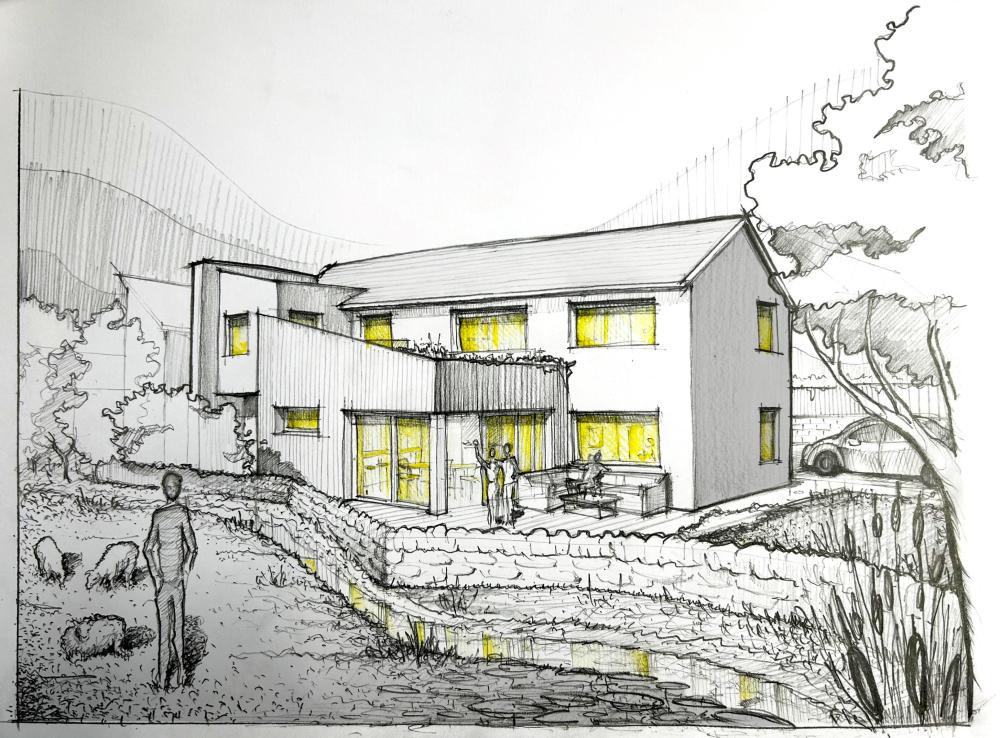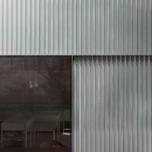Leaderboard
Popular Content
Showing content with the highest reputation on 07/22/23 in all areas
-
Absolutely- how long have we had condensing boilers now and even now they still aren’t really being pushed with weather comp. by installers or manufacturers. The amount of gas wasted… part of the reason gas installs have been quite so cheap is that they rarely are designed for efficiency. Had they been then the rads would be already reasonably suitable for transition to a HP.2 points
-
Gas boilers can be made to be efficient but the problem is they are not, they are fitted as high temperature systems when they should be weather or load compensated. A system boiler with unvented cylinder on a hot water priority can run multiple different flow temps one for DHW one for UFH and a seperate one for rads, like I have on my system. I am able to run my unvented cylinder at 42c with a once in a while 60c legionella cycle.2 points
-
Yes, the paint company had the steels plan and calulated the required quantity. No I agree, I think the paint is probably a waste of time but building control like to see it. ..Painting wasn't as bad as I expected. But then after reading all the comments here, I was expecting it to be hellish. 😬 Yes its thick and hard work but my builder actually pitched in to halve the pain. Which was nice of him. And here's the finished beam, with a bit welded on to take it over the middle of the padstone and beautifully painted. 🤗2 points
-
If it's the same Titan chainsaw I have that came from Screweys (brilliant saw by the way) it came with an Oregon bar and chain, and they sell the replacement so I will just buy it from there. But my original chain (with a quick sharpen every now and then) is lasting way better than the previous chainsaw I had. The key to chain sharpening is little and often. Don't wait until it won't cut and smokes before even thinking about sharpening it. If it won't cut 25mm to 50mm hedge trunks then boy it's "done"2 points
-
I would disagree, in these times of water wastage it makes sense to water in the evening so the water does not evaporate as quickly as midday in sunshine and soak in to be absorbed by the plants. Like Monty Don I don’t believe in watering (unless using rain water). We need to change the flowers and plants etc we grow to match the climate we now have. IMO anyone with an irrigation system from the mains must be on a water meter.2 points
-
Also what is your predicted electric price for 10 years? If you have an option of cheap overnight electricity it may be better not to install any heat pump but just enjoy the low capital outlay and trouble free operation of an immersion and a few storage heaters. For info 186m2 in the south of Ireland we use about 3200kWh for space heating and 3650kWh for a family of 4. Passive insulation levels.2 points
-
Hi, we have just obtained Planning Permission for 2 houses and were looking to build both simultaneously and sell one and live in the other. As this is somewhat unusual we thought others might like to know what we discovered when we did some research and we talked in general terms to our accountant. Obviously it depends on individual circumstances and the following does not constitute any form of advice - and there may be other ways to look at it and we are no experts and we haven't investigated the details fully yet. CIL - if you self build and live in the house for 3 years you can (if you get the paperwork right) be treated as exempt from CIL. If you build two then you are a developer and CIL is payable. If you are demolishing then you can subtract the GIA of the old building from the total new build GIA to reduce the bill. You MAY be able to negotiate which new build house gets its CIL gets reduced. VAT - if you self build then you are exempt (either at point of purchase or in a retrospective reclaim) from much of the VAT. If you build 2 or more no such rules apply so you would need to be VAT registered to reclaim the VAT. VAT is likely the largest single tax hit you will take so its important to get this one right. There may be some cashflow benefits from getting vat back during the build rather than waiting to do a reclaim - but offset is the 'pain' of vat registration. Not sure but you may be able to reclaim the vat paid on 'services' etc. which you can't as a self builder. CGT / IT - this is where it gets tricky - if you self build one house and live in it for an (unspecified) period of time as you primary residence then when you sell you are usually exempt from CGT on any gain. If you build 2 or more then you are a developer and its very likely that any profit you make will be subject to Income Tax at your marginal rate. It seems rules have changed here as CGT might have applied to this case its not often true any more. It seems that much of the interpretation of this depends on your 'intent' - is your plan to build 2 and sell 1 as a developer? If so this is viewed as your occupation and profits are taxed as income not capital gains. There 'may' be some scope to develop the first house, live in it, establish it as your primary residence, then build the 2nd, sell the 1st, and move into the 2nd as your primary residence i.e. two sequential self builds. However you need to be very careful that your 'intent' was not to act as a developer! In our case the fact that our PP is for two houses from the start is a bit of a giveaway - you 'might' get PP for the first house alone and then subsequently (after living in the first house) realise that there is scope for a second house on the plot and subsequently build something more suited to your needs. There may be some scope (say you own the entire plot) to sell a portion of the plot to a development 'vehicle' run by you - perhaps as maybe sole trader, LLP or limited company. You would need to sell the land at 'market value' as this is an obvious area for scrutiny. You 'should' (not actually testing this theory yet so beware) be able to retain the land and build the house you plan to live in as an individual 'self build' exempt from CIL and VAT etc. exactly as any single self build does. You 'should' also be able to develop the 2nd house within the development vehicle as a separate entity and be taxed on that separately for VAT (you would VAT register the vehicle) and IT, Corporation Tax etc. You do have some scope and flexibility to pay yourself as a director / shareholder of the 'vehicle' but this is getting pretty complex pretty fast! For any shared costs you need to be very careful that they are apportioned on a 'fair' basis and not as a deliberate means to reduce the 'profit' on the resale unit. SDLT - if a development 'vehicle' buys the land then it will need to pay Stamp Duty on this but the rate is less than an individual will pay - need to check this. Also be careful about second home SDLT if you are an individual - again not looked at in detail but there are some rules about reclaiming 2nd home SDLT (if you own one home buy a plot you pay 2nd home SDLT. If you sell the first home within a period of time you can reclaim the 2nd home SDLT) that may fall apart in the 2 house picture. Funding You also need to give some serious thought to your funding if you build two. Self build (regulated) mortgages do not seem to work for this scenario and you need to start looking at (unregulated) developer finance and this is not a cheap source on money - start thinking 1% per month interest! plus a 2% setup fee! Now you may be able to offset these costs against any profit but its still expensive. It seems that if you can get to 'wind and watertight' before taking on any developer borrowing then the rate drops to only say 0.5% per month (plus setup etc) with 'refurbishment' loans. Construction Industry Scheme & Health and Safety - if you are deemed a developer and building more than one house (and are paying subcontractors) it seems you need to register for CIS and comply with H&S as a developer. Both of these appear pretty onerous and costly. CIS seems to be another of those schemes where you act as an unpaid tax collector and have to submit quarterly returns. Not exactly sure what is involved but it would need some research to make sure you are compliant. Well that's what we discovered - bottom line is that building two is tricky and we would recommend you take professional advice early on from a tax accountant who understands this stuff (not all accountants will!). You will need to be very CAREFUL in what you do and it seems that some poor decisions early on may bite you later on so BEWARE! And the last caveat - as with all taxation the landscape can change overnight - so even if you have it all mapped out the taxation rules could change and you could be much worse off. There may be others out there who have done something similar and know much more than we do, so we would love to hear sage advice and hard won experience. Though there is a school of thought that you are daft to even consider one self build - you must be totally insane to even think about two! Hope that helps!!!! We will let you know how this pans out as we learn more.1 point
-
My oil fired CH boiler was cycling. That is, it was cutting out having reached temperature but then re-firing again within a minute. I think it is a common problem, and given that it’s inefficient for the boiler to be stop/starting all the time, I wanted to fix it. I researched on-line and there are some really expensive products (£400+) that allegedly solve the problem. Electronics that introduce hysteresis into the control mechanism etc. Sledge hammer to crack a nut, I thought. Anyway, I solved the problem by wiring-in a time delay relay to the main supply. These relays - about £10 each - close their contacts after an amount of time has passed since their coil was energised, as determined by the adjustable setting on the relay body. I set mine to 6 minutes. What this means is, every time the boiler is off, or cuts out having hit the temperature limit, it will take a minimum of 6 minutes before it will restart. Cycling problem solved. FYI in case others have the same problem.1 point
-
I thought that this list would be of benefit to the group, it's a summary of my most recent research on the dMVHR issue... Simultaneous supply and extract: Partel lunos eGo - https://www.partel.co.uk/product/lunos-ego/ Blauberg de-carbon freshpoint - https://www.blauberg.co.uk/en/de-carbon-freshpoint-pro-single-room-heat-recovery-ventilator Ecostream Prana - https://ecostream.org.uk/products/ Mitsubishi Lossnay V100 - https://www.bpcventilation.com/mitsubishi-v100u5-e?gclid=CjwKCAjwwb6lBhBJEiwAbuVUSksRORhtqn2lgkCad84gXTJFrMHPc_UPzfaVmkRKVTfdA-Xm4jVx5RoC-FkQAvD_BwE Reversing (may/may not be installed in pairs/interconnected): Partel lunos e2 - https://www.partel.co.uk/product/lunos-e/ Blauberg Aeris mini/midi, Vento mini/midi - https://www.blauberg.co.uk/en/blauberg-uk-mvhr-heat-recovery-ventilation-range/decentralised-single-room-heat-recovery-ventilation-units VentAxia Vent-Axia Lo-Carbon Heat Save - https://www.vent-axia.com/range/decentralised-mechanical-ventilation-heat-recovery Generic sub £400 units from eBay - https://www.ebay.co.uk/itm/193033436176?mkcid=16&mkevt=1&mkrid=711-127632-2357-0&ssspo=fRODC-NSQ2C&sssrc=2047675&ssuid=E-qQEBUERQS&widget_ver=artemis&media=COPY https://www.ebay.co.uk/itm/404354305089?mkcid=16&mkevt=1&mkrid=711-127632-2357-0&ssspo=rdzqkat2s6i&sssrc=2047675&ssuid=E-qQEBUERQS&var=674284052403&widget_ver=artemis&media=COPY I'm really not sure which units are the best, and what you should buy... But I hope that list is helpful.1 point
-
This thread shows a real deficiency in English building regulations system, that it is possible to build a house that does not meet the standards, but not find out it has failed to meet the standards until it is finished. The Scottish system is much better. You have to have a design SAP done before you can get a building warrant. And then you know if you build the house to what the agreed plans say, it WILL pass the as built SAP, no nasty surprises.1 point
-
Did you get a result for an air test?? A better score here isn't hard to achieve with some sealant and a few hours hard work.1 point
-
Yes they will ask for air test etc Most of the companies I work for achieve 2 Which is good considering I haven’t seen an air test being carried out for about five years The as built final sap is totally reliant on the info you give1 point
-
1 point
-
Fit 4kW PV on roof. Least intrusive addition and it should get you "over the line" Not only that, it will reduce your electricity bills for the foreseeable future. DON'T go anywhere near an MCS supplier for the PV. You just need a roofer to fit the brackets and an electrician to fit the panels and connect it. I fitted my own for under £2K in parts cost. It is a great shame you did not ask the forum at design stage, we could have given lots of suggestions for how to build a good house. Sadly it looks as though you will have ended up with something akin to a mass produced developer house, the very minimum insulation and air tightness they can get away with and slap on just enough solar PV to scrape through. such a house will have higher ongoing heating costs but the developer does not care because 99% of buyers don't care or don't know. If you are self building you have a chance at the start to do it properly and get something better.1 point
-
Set the cylinder to be nominally <48C and be done with IMO. Sack off the legionella cycle entirely. Not required. The only real risk to normal people is really the shower (cold pressure drops; hot water red hot; jump out of your skin and whack your head on the shower valve as you slip before getting scalded whilst out for the count) If you were old and demented you might leap into a bath you've just filled at 60C; or if thick you might fill a bath with scalding water at then throw a baby into it; but 48C isn't going to save you from either of those anyway. I think most all scalding is now in "care" facilities with shonky recirculating hot water systems dialled up to 11 to try kill legionella; or scumlord properties with dodgy immersions in direct electric tanks sat at 80C with non thermostatic mixers for showers etc.1 point
-
Yes, I was moved over in 4 days, still going through the change over process but am on Octopus, while the full transfer takes place which will take about 6 weeks.1 point
-
The IP rating is sometimes deceptive. The first digit is dust ingress so 5 is not bad. The second is water and 4 is not great - it will stand splashing but you can expect some water ingress to be possible especially in exposed positions. You realy want ip65 or 66 to be sure of keeping British weather out and 67 if very exposed.1 point
-
When you climb up something to look at the view you don’t just look at the one spot you take in the whole vista by changing your perspective. We are 260m or so above sea level with the valley stretching out below us to the hills in the distance. The view is completely uninterrupted. We can see each end of the hill range which is some 13km end to end. The weather rolls up the valley before hitting the town and turning towards us. We can see it coming for some 30 minutes. It’s mesmerising watching it. Very often there’s a mist that hangs low over the valley and we are looking down on top of it. It’s beautiful. While we can’t quite see the sun rise we do see it from very early and watch it traverse the sky before setting right in the middle of our large picture window behind some trees. We could have put a sliding door and removed the other three large windows but we would lose that whole view so consequently the whole wall is pretty much glass. Arguably we could just stand outside I guess. The big full height windows also let in a lot more light.1 point
-
Are there any ‘assumed’ values in the current calc - they will generally assume ‘conservatively’ i.e. not to your gain. On a similar note I would double check all their input data. Stuff as simple as GIA can be substantially out. SAP calcs are fairly cheap and therefore often it’s a fairly careless procedure.1 point
-
1 point
-
I feel for you, I've had a lot of those retrospective moments too. I had a design SAP done early on after reading about them and it turns out conversions don't even need one (when I did mine at any rate). Go figure, but that doesn't help you. Developers often put a PV on the roof without even connecting it up to get the SAP calc correct.1 point
-
Ye Pay a £150 to a online company and they get you through I’ve said many times before Sap and air testing are a joke and need changing I’m not saying you should But if you where to tell the As built Sap accessor that you had upgraded the the insulation He or she has to go off the information that you give him He will ask for boiler cert windows etc I only had a window quote with the u values on In fact I had three so could have used any1 point
-
I'm using the Loxone valves so only usable with Loxone but there are others out there. I know Mohlenhoff used to do them, controlled by a 0-10v control signal.1 point
-
Hmmmm, there's a stage before that: it's needing to use the saw : and knowing where the sharpening stuff was put away last time. And in houses with children who now have their own house - checking that your sharpening kit has not been ' stolen '. I walked into my lad's workshop the other day. He had the good grace to show his embarrassment .1 point
-
I have planted, in pots, succulents. They seem to survive everything the weather throws at them. Yesterday I covered them in sawdust while woodworking. They will survive that as well.1 point
-
I agree with that from a water saving perspective, but as the article says, from the plants point of view, it make no difference. It is probably of more importance to commercial horticulture, which is a bit of a environmental disaster in my opinion.1 point
-
I think your professional has wildly over estimated the heat loss. That is almost 6 times passivhaus levels and you have near passivhaus insulation. Have you tried consulting the heat loss spreadsheet on here to see if your predicted losses are that high?1 point
-
They don't - the inside unit is just same bits as a monobloc, the cylinder still has a water coil in it, so it has two levels of heat transfer not one that am speaking about. Don't really see any advantage of a water split system. Just use a monobloc, keep all the noise and bits outside in a single box, then you only need a 3 way valve inside to connect to cylinder and heating. My heating system is as simple as it gets, monobloc ASHP, a 3 way valve, UFH manifold (no pump or mixer, no actuators or wiring centre), single house thermostat to give stop, start permissive to heat pump and act as overheat protection. No internal controllers, everything on the outside unit, set to run WC. Once commissioned out of the user eye sight, so would have little or no messing about changing setting. Anything important hides behind an installer password. I have a small thermal store hooked up for DHW, but that gets a little complex as I heat via a PHE for heating the cylinder, and have a return booster pump, due to less than ideal pipe sizes and lengths. So pretty much replicates a retrofit of using what you have.1 point
-
The single biggest mistake we made with our design was to have the plant room with ASHP internal gubbins pumps etc beneath our master bedroom. It is very noisy.not the ASHP, just the internal pumps when it is on. No issue in the summer but a nightmare in the winter. your design has that stuff basically in your bedroom. which will be even worse. ***Strongly*** suggest you move it over towards or even inside the garage. Also consider what is above it. put acoustic insulation in the plant cupboard including ceiling. Learn from my mistake.1 point
-
If you are doing a split system, you may as well bring refrigerant inside also. Have PHE in the box with refrigerant one side and drinking water the other, do away with the cylinder coil. Looked at the refrigerant temps the other day and the hot side was 75 degs. That's R32 not propane. Existing setup adds inefficiency, refrigerant to PHE, to heating water, to a coil in a tank of drinking water. So indoor unit has two PHE inside the indoor box and two pumps, and a 3 way diverter for refrigerant. Call for DHW heating, bronze DHW pump starts heats cylinder water directly. When satisfied, 3 way diverter swings to CH DHW pump stops CH starts.1 point
-
1 point
-
1 point
-
TP600 is what you need with Fm330 and ME508, TP654 will not work for a 5mm gap.1 point
-
1 point
-
Hey John, I am by no means an expert in this field, I did the design and installation in current house and planning the same for the next one. Couple of small points maybe worth considering; Loft location is convenient in one way, but is also a torture in another. You need to access the machine to change filters (twice a year for us), and when my machine played up a few months back, it was less than fun getting it down the attic stairs to have a full inspection. If possible, I would look into placing the unit in a closet or wardrobe on the first floor. I wouldn't be greatly concerned with the balancing between floors since the overall balance is correct, but, I would also possibly have a look at having two machines, one upstairs, one downstairs. As you can opt for smaller units, the price may be very similar, but gives you more overhead if you want to run higher rates than those listed without much stress on the units.1 point
-
I use timers. The good ones give a lot of timing options, and you can adjust the tap to a sensible flow. I will only use hoselock or gardena now, but even they fail in time...too short a time, about 2 years on average. I have tried b and q own brand.....never again. One had a digital display that was barely legible and failed in hot weather another had a metal part in the mechanical that rusted...duhhhh. as I keep telling myself....no own brands from kingfisher....however disguised as a brand. I also have a fairly expensive drip system that would also power a soaker tube. It is ever so clever as it is solar powered and pumps when the batteries reach a setting of my choice. So it goes every half hour on a sunny day or not at all on a cloudy rainy day. It works off a barrel which fills from the greenhouse gutter, but lasts a week if no rain. Actually £60 is very good value for pump and tubes. The only trouble is the tuoccasionally slly clog up with lime or algae, so some patience is required. I wouldn't ever water the grass. It takes its chance. Monty Don says he never waters flower beds.1 point
-
Don’t do it.... Go with E7, heat the tank to 45c with ASHP to maintain CoP above 2.5, and then top to 62c with E7 immersions. Time of the top up is about 75 mins at 3Kw for a 300 litre tank, so you’re 3.75KwH or 20p ish to get a lot of hot water. For the sort of input you need, a 4kw Mitsubishi would be change of £3.5k installed as you don’t need MCS at those levels for RHI. The Nilan unit is similar to the Genvex units and includes MVHR so not a good example.1 point
-
Hi, just called HMRC this morning regard to VAT refund and CGT. Our case description : building two - one for ourselves to live in, the other for rent. HMRC response to VAT refund on self-build - they said it is fine to claim VAT refund on the self-build house, even if two houses are built together. HMRC response to CGT - CGT will be only applied to the house for rent, not applied to self-build house. I am planning to write to HMRC and get response in writing.1 point
-
We were looking at doing the same but we are going to build the new house for ourselves and sell the old house we spoke to an accountant they said we would have to pay tax. The mortgage company would not lend us the money classed us as commercial. Two houses on one planning application, so we split the application1 point
-
There are tax implications in doing as you suggest and unless you are an experienced developer I would suggest selling the plot for house B and using the tax free proceeds either to build the proposed new house or to live mortgage free.1 point



















